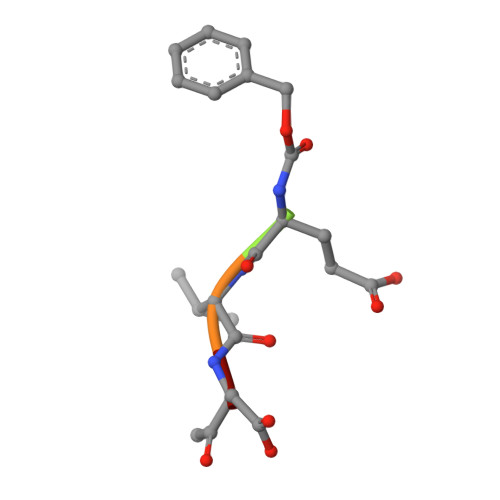Dimer formation drives the activation of the cell death protease caspase 9.
Renatus, M., Stennicke, H.R., Scott, F.L., Liddington, R.C., Salvesen, G.S.(2001) Proc Natl Acad Sci U S A 98: 14250-14255
- PubMed: 11734640
- DOI: https://doi.org/10.1073/pnas.231465798
- Primary Citation of Related Structures:
1JXQ - PubMed Abstract:
A critical step in the induction of apoptosis is the activation of the apoptotic initiator caspase 9. We show that at its normal physiological concentration, caspase 9 is primarily an inactive monomer (zymogen), and that activity is associated with a dimeric species. At the high concentrations used for crystal formation, caspase 9 is dimeric, and the structure reveals two very different active-site conformations within each dimer. One site closely resembles the catalytically competent sites of other caspases, whereas in the second, expulsion of the "activation loop" disrupts the catalytic machinery. We propose that the inactive domain resembles monomeric caspase 9. Activation is induced by dimerization, with interactions at the dimer interface promoting reorientation of the activation loop. These observations support a model in which recruitment by Apaf-1 creates high local concentrations of caspase 9 to provide a pathway for dimer-induced activation.
- Program in Apoptosis and Cell Death Research, The Burnham Institute, La Jolla, CA 92037, USA.
Organizational Affiliation:

















